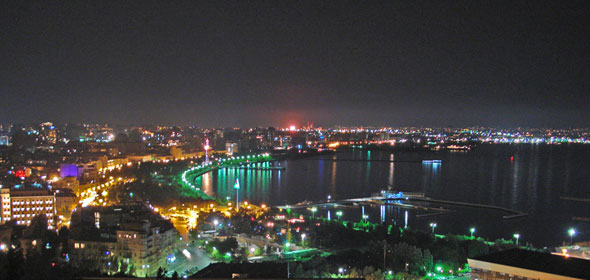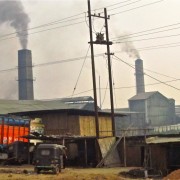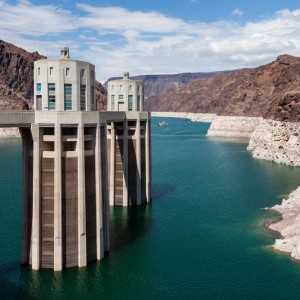Water From Afar—Azerbaijan’s Capital Opens 265-km Water Pipeline
The world’s largest high-pressure pipeline made from a glass-plastic composite material.

Just in time for the new year, the oil-rich nation of Azerbaijan on the Caspian Sea opened a water pipeline that will provide round-the-clock water supplies for thousands of the capital city’s residents, according to Trend.
The 265-kilometer Oguz-Gabala-Baku (OGB) pipeline sends water to Baku, a city of two million, from wells drilled in the Caucasus Mountains north of the capital. The two-meter diameter pipeline is made from glass reinforced plastic (GRP), similar to fiberglass. For the last four years, the pipes have been produced locally by the 1500-employee company Azkompozit in a refurbished Soviet-era factory.
Because of the 410-meter elevation difference between the source and Baku, no pumping is needed to move water through the system. The steep gradient, however, requires that pressure reduction stations be placed along the pipeline to keep the joints from bursting.
The project, completed in just three years and financed from oil revenues, is the world’s largest high-pressure water system built with GRP, besides a 55-kilometer section where the pressure is too high, so steel was used instead. The GRP material was chosen because it can withstand high water pressures and is less corrosive than steel. Installation costs are lower, as well, because of the material’s low density.
“Compared with the Kura water pipeline with the same productivity, energy costs of Oguz-Gabala-Baku water pipeline is almost 7-fold less,” said Nizameddin Rzayev, chairman of the Azersu national water operator.
To integrate the pipeline project with the city water network, Baku officials built hundreds of miles of water and sewer lines.
The OGB pipeline continues a tradition of ambitious water engineering projects for Baku. In the early 20th century, the city commissioned a 170-kilometer pipeline to deliver water from springs in the Caucasus Mountains. Completed in 1917 and made from porcelain, the Shollar pipeline remained the best source of drinking water for Baku until the new OGB system was inaugurated last week.
The system will not operate at full capacity until February, according to ABC News Azerbaijan. Once it does, however, the fraction of Baku’s two million residents supplied continuously with water will rise from 40 percent to 75 percent. And the remaining quarter of the capital city’s population receiving water intermittently will benefit as well, with access times doubling.
Source: Trend, ABC News Azerbaijan
Read more on Caucasus, oil, and water at Circle of Blue.
Brett writes about agriculture, energy, infrastructure, and the politics and economics of water in the United States. He also writes the Federal Water Tap, Circle of Blue’s weekly digest of U.S. government water news. He is the winner of two Society of Environmental Journalists reporting awards, one of the top honors in American environmental journalism: first place for explanatory reporting for a series on septic system pollution in the United States(2016) and third place for beat reporting in a small market (2014). He received the Sierra Club’s Distinguished Service Award in 2018. Brett lives in Seattle, where he hikes the mountains and bakes pies. Contact Brett Walton









Leave a Reply
Want to join the discussion?Feel free to contribute!